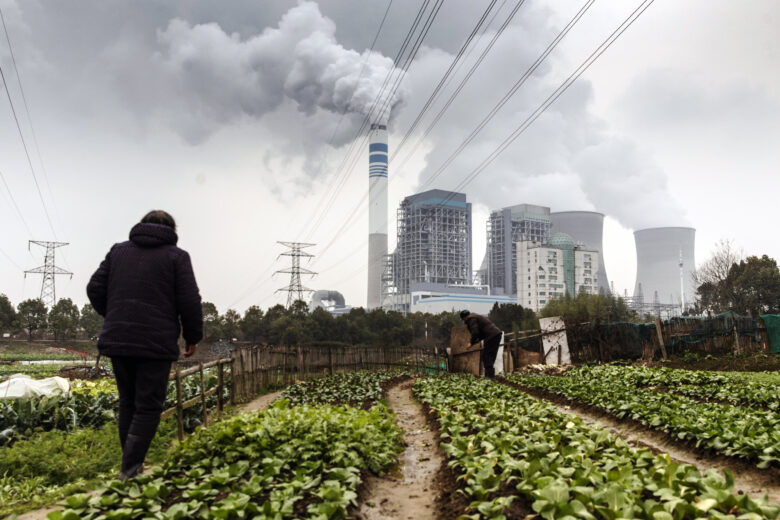The fight against climate change has reached a critical point, as rising carbon dioxide levels threaten ecosystems and human health. Scientists and engineers are using modern ecotechnologies to combat climate change by capturing and storing carbon emissions before they reach the environment. From large industrial filters to algae-powered bioreactors, these developments promise a cleaner, healthier future. Governments and companies are investing heavily in carbon capture technology for its potential to limit global warming. These developments may offer our best chance to balance the planet’s carbon balance as we strive for net-zero emissions. Let’s take a look at how ecotechnologies are transforming the fight for clean air.
Carbon Capture Technology: What is It?
Systems that absorb carbon dioxide at the source of emissions (such as factories and power plants) to prevent it from being released into the atmosphere are called carbon capture technologies. Direct air capture (absorbing carbon dioxide directly from the air), pre-combustion capture (removing carbon before fuel is consumed), and post-combustion capture (filtering carbon dioxide from exhaust gases) are the three main capture methods. The captured carbon can be buried underground, used to produce new building material, or even converted into fuel. The technology offers a bridge to a better future for hard-to-decarbonize industries like cement and steel production.
How Direct Air Capture Works:
One of the most promising ways to decarbonize is through direct air capture (DAC). Air is sucked in by giant fans and then passed through chemical filters that attach to carbon dioxide molecules. We then compress and heat the captured carbon to a pure state for reuse or storage. Companies like Climeworks and Carbon Engineering are leading the way in this field, building large DAC facilities in Canada and Iceland. The growth of renewable energy could make DAC a more efficient and scalable option, although it is still energy-intensive. Widespread adoption of the technology could potentially undo some of the damage resulting from decades of uncontrolled emissions.
Natural Carbon Capture: The Role of Oceans and Forests
Natural carbon sinks like forests and oceans have been controlling Earth’s temperature for thousands of years, and high-tech solutions have made headlines. Trees absorb carbon dioxide through photosynthesis, but the ocean dissolves large amounts of carbon, which can harm marine life and contribute to ocean acidification. Low-tech but highly effective carbon capture techniques are becoming increasingly popular, such as reforestation programs and ocean alkalinity enhancement (i.e., adding minerals to seawater to increase CO₂ absorption). Because these ecosystems work in concert with human-developed technologies to maintain the climate, their protection and restoration are crucial.
Harnessing Carbon: Turning Pollution into a Commodity
Scientists are coming up with creative ways to use captured carbon instead of simply storing it. Scientists can use carbon to make concrete, polymers, synthetic fuels, and even carbon fiber for lightweight vehicles. Some companies are incorporating CO₂ into building materials and storing it for decades, while others, like LanzaTech, are using microorganisms to convert industrial emissions into ethanol. In addition to reducing emissions, such strategies provide economic incentives for carbon capture, making it more attractive to companies.
Barriers to Carbon Capture Adoption:
Despite its enormous potential, carbon capture technology faces many obstacles in its development. Large-scale implementation remains challenging due to high costs, high energy consumption, and the need for extensive infrastructure. Critics argue that the focus on carbon capture distracts from reducing emissions at the source. In addition, there are concerns about long-term safety and potential leakage of carbon stored underground. To reduce costs, improve efficiency, and maintain public trust in these institutions, the public and private sectors must work together.
Future of the Carbon-Neutral Industry:
With advances in carbon capture technology, the entire industry can achieve carbon neutrality or even carbon-negative emissions. The agricultural sector is exploring soil improvement technology for carbon sequestration, while energy companies are studying the combination of hydrogen and carbon capture. The aviation and shipping industries heavily depend on fossil fuels, and they view synthetic fuels derived from captured carbon as promising alternatives. With continued innovation, the future of an industry that actively cleans the air, rather than pollutes it, may not be far away.
Conclusion:
Carbon capture technology is a bold step toward undoing the damage caused by decades of unchecked emissions. While not a silver bullet, it offers a way to proactively remove carbon dioxide from the atmosphere and a lifeline for businesses struggling to decarbonize. Combined with sustainable practices, reforestation, and renewable energy, these advances can help improve the planet’s climate. While the path forward is difficult, a future with cleaner air and a stable climate is achievable through international collaboration and continued investment. The window for major change is closing, and now is the time to take action.
FAQs:
1. How much does carbon capture technology cost?
Yes, high energy and infrastructure requirements currently make it expensive. However, we anticipate a reduction in prices as the technology advances and expands.
2. Can carbon capture alone solve climate change?
No, it is just one tool among many. Effective climate action requires reducing emissions at the source, switching to renewable energy, and protecting natural carbon sinks.
3. What happens to the captured carbon?
It can be used in industrial processes, stored in underground geological formations, or converted into raw materials, such as fuels and building materials.
4. Is direct air capture more energy efficient?
Although direct air capture (DAC) is currently energy-intensive, it could become a more sustainable solution in the future when combined with renewable energy.
5. Is underground CO₂ interference dangerous?
Although CO₂ is generally considered harmless, potential leaks can be harmful to human health and the environment. Secure storage locations and proper monitoring are essential.




